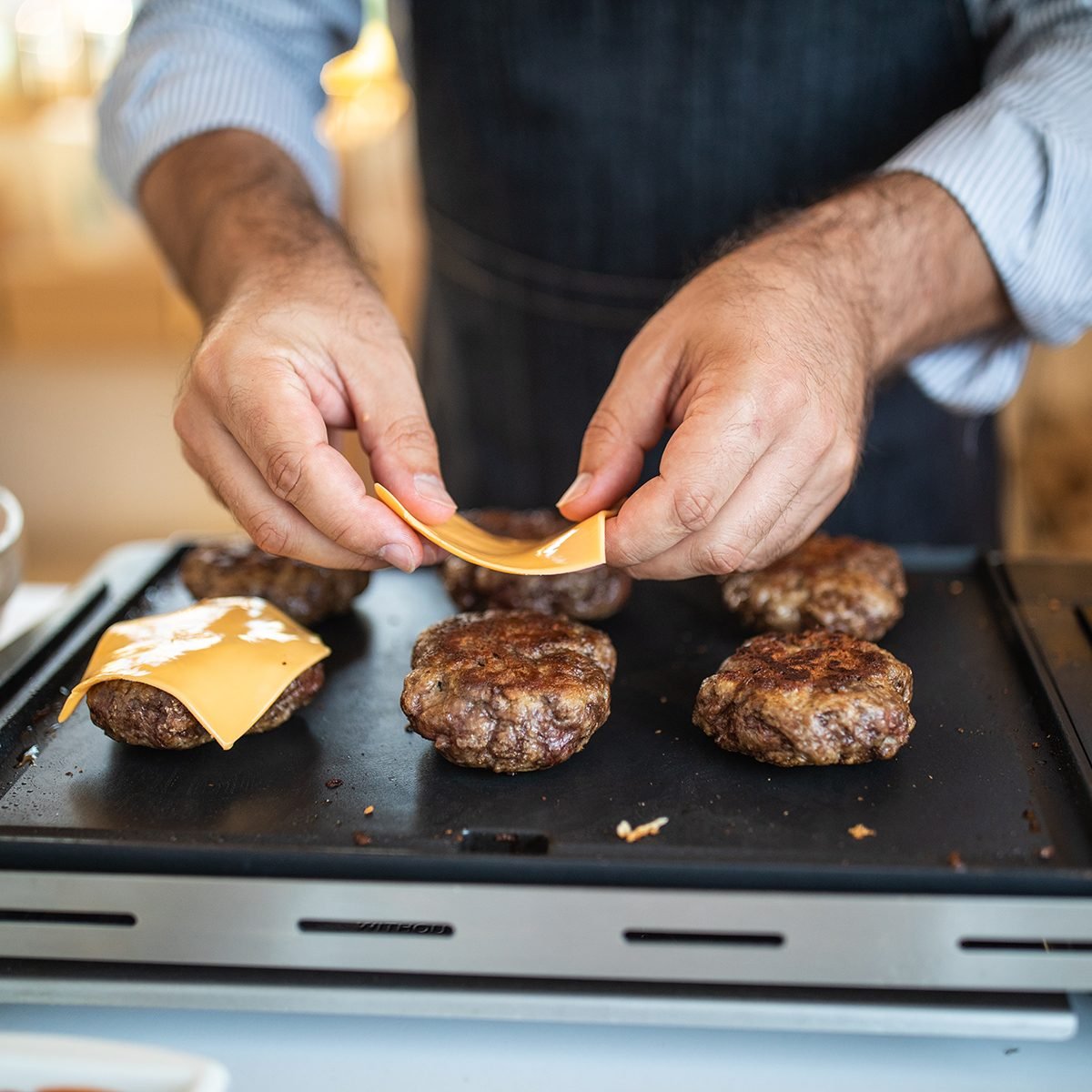Indoor grilling is a versatile cooking technique that brings the joy of outdoor grilling into your kitchen. Whether you’re a seasoned chef or just starting out, indoor grilling is appealing due to its simplicity, year-round usability, and the deep, smoky flavors it adds to a wide range of dishes. This guide will cover everything you need to know about indoor grilling, from selecting the right equipment to mastering the techniques for perfectly grilled meals.
Understanding Indoor Grilling
Indoor grilling involves using specialized appliances like electric grills, grill pans, or countertop contact grills to prepare food inside your home. Unlike traditional outdoor grilling, which uses gas, charcoal, or wood, indoor grills operate on electricity, making them a smokeless and convenient alternative. There are various types of indoor grills available, each designed to replicate the rich, caramelized flavors associated with outdoor grilling.
Varieties of Indoor Grills
Selecting the right indoor grill depends on your cooking style, available space, and budget. Here are three primary types of indoor grills:
1. Electric Grills
Electric grills are the most prevalent type of indoor grill. They offer user-friendliness and consistent heating, with adjustable temperature controls suitable for grilling meats, vegetables, and even sandwiches. These grills come in two forms: open grills, which mimic outdoor grills, and contact grills, like the popular George Foreman model, which cooks food on both sides at once. Their smokeless operation makes electric grills a preferred choice for those living in apartments or spaces where traditional grilling isn’t feasible.

2. Grill Pans
Grill pans are stovetop cooking tools designed with ridges to imitate a grilling surface. These ridges sear food, allowing excess fat to drain away while creating those characteristic grill marks. Grill pans are versatile, easy to store, and ideal for those who enjoy the precision of stovetop cooking. Cast iron grill pans are particularly favored for their heat retention and even cooking performance.
3. Infrared Grills
Infrared grills use radiant heat from infrared elements to cook food quickly. They heat up rapidly, providing high temperatures that can sear meats while keeping them juicy inside. Known for their speed and efficiency, infrared indoor grills are perfect for those who prioritize quick and even grilling.
Selecting the Right Indoor Grill
When choosing an indoor grill, keep the following factors in mind:
1. Size and Space
The grill’s size is crucial, especially if you have limited kitchen space. Some grills are compact and easy to store, while others may require more counter space. Select a grill that comfortably fits within your kitchen layout.
2. Temperature Control
Having good temperature control is essential for perfectly grilled food. Adjustable heat settings are vital for cooking different types of food, from delicate fish to thick steaks. Look for grills with a range of temperature options to enhance versatility.
3. Non-Stick Coating
A non-stick surface is beneficial for indoor grilling as it prevents food from sticking to the grill plates. This not only promotes even cooking but also simplifies the cleanup process.
4. Build Quality
Investing in a durable indoor grill is key to long-term use. High-quality materials like cast iron, stainless steel, and ceramic ensure longevity, better heat distribution, and consistent cooking results.
Techniques for Successful Indoor Grilling
To ensure your food is cooked evenly and safely, it’s essential to employ specific techniques when grilling indoors. Follow these tips for outstanding results:
1. Preheat Your Grill
Always preheat your indoor grill before placing food on it. This ensures that your food starts cooking immediately, leading to better browning and grill marks. It also minimizes the risk of food sticking to the grill surface.
2. Use Oil Judiciously
Even though indoor grills usually have non-stick surfaces, lightly oiling your food (not the grill) helps prevent sticking and adds flavor. Brush oil directly onto meats, vegetables, or other items before grilling to avoid excessive smoking.
3. Marinate for Added Flavor
Marinating meats and vegetables before grilling enhances their taste. Marinades containing acidic ingredients like lemon juice, vinegar, or yogurt can tenderize meats while enriching their flavor. Remember to pat dry marinated items with a paper towel to eliminate excess moisture before grilling, which helps prevent smoking.
4. Create Grill Marks
Achieving attractive grill marks not only looks appealing but also indicates well-cooked food. To create distinct marks, avoid moving the food too often. Place it on the grill and let it sear undisturbed for a few minutes before rotating it 90 degrees for a crosshatch pattern.
5. Control Smoke Production
While most indoor grills are designed to limit smoke, certain foods (especially fattier meats) can still produce smoke when fat drips onto the heating element. To minimize smoke, trim excess fat from meats and clean the grill regularly. Additionally, grilling in a well-ventilated area, such as near a window or under a kitchen hood, can help.
Ideal Foods for Indoor Grilling
You can grill a wide variety of foods indoors, but some yield better results than others. Here’s a rundown of the best options for indoor grilling:
1. Meats
Steaks, chicken breasts, pork chops, and sausages are excellent choices for indoor grilling. For thicker cuts, a meat thermometer is essential to ensure they reach the proper internal temperature without overcooking.
2. Vegetables
Vegetables such as zucchini, bell peppers, eggplant, and mushrooms are perfect for grilling indoors. They cook quickly and develop a charred, smoky flavor that enhances their natural sweetness. Toss them lightly in olive oil before grilling for optimal results.
3. Fish and Seafood
Fish and seafood like salmon, shrimp, and scallops are well-suited for indoor grilling and require minimal cooking time. These delicate proteins perform best with moderate heat and can be complemented with citrus-based marinades for a fresh taste.
4. Sandwiches and Paninis
Indoor grilling is ideal for preparing paninis and grilled sandwiches. A contact grill, in particular, presses sandwiches while cooking, resulting in a crispy crust and melted filling.
Cleaning and Care for Your Indoor Grill
Maintaining a clean indoor grill is crucial for food safety and prolonging the lifespan of your appliance. Follow these guidelines for proper upkeep:
- Clean After Each Use: Wipe down the grill with a damp cloth after every use to eliminate grease and food debris. For stubborn residues, a grill-safe cleaning brush is effective.
- Avoid Harsh Cleaners: Use mild detergents for cleaning the grill’s surface. Abrasive cleaners can damage the non-stick coating.
- Empty Grease Trays: Many electric grills have removable grease trays that collect excess fat. Empty these trays regularly to prevent buildup.
Conclusion
Indoor grilling is an outstanding cooking technique that lets you savor grilled flavors throughout the year, all from the comfort of your kitchen. With the right equipment, techniques, and attention to detail, you can create delectable dishes that rival those cooked outdoors. From succulent steaks to perfectly charred vegetables, the possibilities with indoor grilling are endless. By selecting the right grill, honing your skills, and maintaining your appliance, you'll be well on your way to becoming an indoor grilling aficionado.
